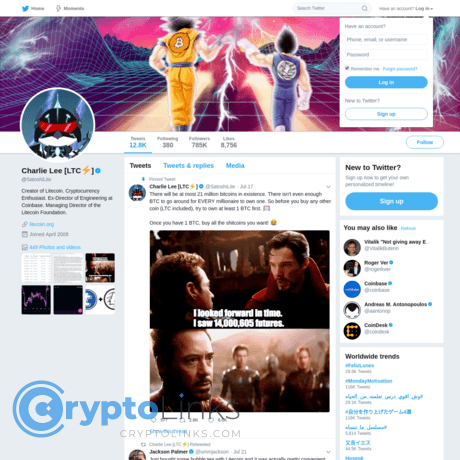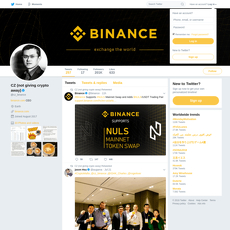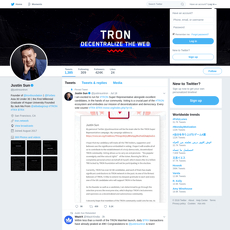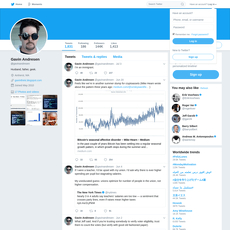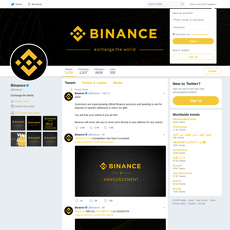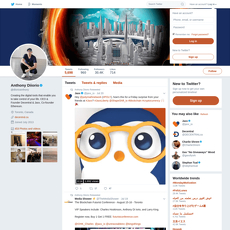Charlie Lee LTC Review
Charlie Lee LTC
twitter.com
Charlie Lee (LTC) Twitter/X Review Guide: @satoshilite — Everything You Need to Know + FAQ
Is following @satoshilite actually useful for smarter Litecoin decisions, or is it just another crypto echo chamber? If you care about real updates (halvings, MWEB, miner health, network changes) and not just memes, you’re in the right place.
Describe problems or pain
Crypto Twitter can feel like trying to trade during a fireworks show—loud, flashy, and easy to get distracted. With Litecoin, there’s an extra layer: every halving brings recycled charts, MWEB still gets misunderstood, and real network progress is buried under price takes.
- Signal vs. noise is brutal: Threads about “what halving will do to price” drown out the actual issuance and miner incentives that matter for LTC’s security.
- MWEB confusion is everywhere: In 2022, several South Korean exchanges delisted LTC over compliance concerns tied to MWEB’s privacy features. That kind of headline spirals fast if you don’t have context.
- Out-of-date takes linger: Old narratives about fees, security assumptions, or “Litecoin is just a testnet” resurface each cycle without any of the new data.
- Impersonators and scams exist: Even verified accounts have been abused in big crypto scams before (remember the 2020 Twitter hack and fake BTC giveaways? example). Scam replies under popular tweets are still common.
When you follow Charlie, the goal isn’t to react faster—it’s to understand better. But that only works if you know what to look for.
Promise solution
Here’s how I make Charlie’s feed actually useful:
- Focus on the right topics:halvings and issuance, MWEB updates, miner/security signals, and clarifications when misinformation spreads.
- Time the attention: pay closer attention around upgrade discussions, dev threads, and network-health posts—not general market chatter.
- Validate fast: cross-check key claims with Litecoin’s GitHub, the Foundation’s posts, and reliable analytics before acting.
- Build a clean feed: follow a tight list of LTC builders, mute scammy keywords, and set targeted notifications so you don’t camp on X all day.
Rule of thumb I use: if a post hints at on-chain, miner, or code changes, it’s worth a second tab. If it’s mainly market vibes, it goes to the watchlist—not the to-do list.
Who this guide is for
- LTC holders who want signal without drowning in noise.
- Traders who care about halving cycles, miner incentives, and liquidity narratives.
- Researchers and writers who need primary-source context from Litecoin’s creator.
- Builders and power users who track upgrades like MWEB and extension blocks.
Quick baseline: Charlie Lee and Litecoin
Charlie Lee created Litecoin in 2011 as “silver to Bitcoin’s gold”—same core idea (sound money, PoW), different parameters for speed and distribution. Litecoin uses Scrypt proof-of-work and 2.5-minute blocks for faster confirmations, with a hard cap of 84 million LTC.
He later worked at Coinbase and in December 2017 publicly disclosed that he had sold/donated his LTC to avoid a conflict of interest, while continuing to support the project’s growth. Today, he’s a director at the Litecoin Foundation, a nonprofit that promotes development and adoption. Litecoin itself is open-source and not owned by anyone.
Why does this matter when you follow him? Because Charlie’s posts tend to prioritize network health, upgrade clarity, and misinformation clean-up over price talk. When you know that, you’ll read his feed differently—and get more value out of it.
Want to know exactly where Charlie is strongest today (and where to weigh his posts lightly)? Let’s map his role, style, and influence so you can read @satoshilite with the right lens—ready to see what actually moves the Litecoin story forward?
Who Charlie Lee is and why his feed matters
When I scroll through @satoshilite, I’m not looking for hype. I’m looking for the creator’s lens on a network that’s been running for over a decade. Charlie Lee’s feed matters because it blends history, technical judgment, and a rare habit in crypto: he corrects bad narratives fast. If you hold LTC or just want clean signal, he’s one of the few accounts where the posts age well.
Short timeline
Here’s the rapid context I keep in mind whenever I read him:
- 2011: Launches Litecoin, positioning it as “silver to Bitcoin’s gold,” with Scrypt proof-of-work and 2.5-minute blocks for faster settlement.
- 2013–2017: Works at Coinbase (eventually Director of Engineering). Litecoin climbs into the top tier of market caps and liquidity.
- 2017: Publicly exits his LTC position to avoid conflicts during peak attention. Continues championing upgrades and education.
- 2017: Helps push for SegWit on Litecoin, setting the stage for a culture of safe, incremental improvements.
- 2019–2022: Supports the Mimblewimble Extension Blocks (MWEB) effort led by contributor David Burkett—one of the most meaningful scalability/privacy upgrades any large-cap PoW chain shipped. Activation lands in May 2022.
- 2023: Halving reduces block rewards to 6.25 LTC. Charlie frames it with miner incentives, fees, and long-term security—useful beyond the headlines.
- 2024–today: Ongoing commentary on hash rate highs, transaction volume, merchant support, and clarifications when media mix up what MWEB actually does.
Role today (and what it means for bias)
Charlie is the most public face of Litecoin and a board member at the Litecoin Foundation, but he’s not a central operator. That balance shows up in how he posts and how I read him:
- What he is: A technical guide with a long-memory of tradeoffs, a link to active devs, and a reliable pointer to relevant repos and proposals.
- What he isn’t: A price caller or token pumper. He rarely makes short-term claims and usually avoids reacting to daily chart noise.
- The bias to account for: He advocates for Litecoin’s design choices. Expect him to highlight Scrypt mining resilience, conservative upgrades, and payment utility. I factor that lens in, then cross-check with data.
There’s also a practical reason his voice carries. Peer‑reviewed research has shown that tweets from prominent crypto figures can correlate with short-term market volume and volatility (multiple studies in Finance Research Letters since 2021). He doesn’t try to “move markets,” but the audience is there—so when he clarifies technicals, it tends to ripple through quickly.
Communication style you can expect
His feed is a mix of engineer-brain and meme energy, which is exactly why I keep it in my notifications.
- Direct and technical when it counts: During MWEB activation, he shared high-signal threads on how extension blocks work and why the upgrade is opt-in. He linked to code and release notes instead of opinion.
- Meme-friendly, but with a point: Expect occasional jokes that make a bigger statement about decentralization or security models. I enjoy these, but I only act on the posts with links, charts, or code receipts.
- Network health over price: You’ll see him talk hash rate, fees, miner revenue, merged mining with Dogecoin, and uptime. If you value fundamentals, that’s gold.
- Receipts matter: He often backs claims with block heights, historical context (e.g., what happened around the 2015/2019/2023 halvings), and references to the Litecoin GitHub or Foundation updates.
“Litecoin is silver to Bitcoin’s gold.” — @satoshilite
That line isn’t fluff—it’s his north star. Faster blocks, Scrypt ASICs, pragmatic upgrades, and support for everyday payments. When he posts, he tends to steer back to that mission.
Where he’s most insightful
- Upgrade threads: His MWEB notes cut through the rumor mill about “privacy coins.” He consistently reminds people MWEB is opt-in via extension blocks, not a default mixer. When some exchanges misinterpreted MWEB, his posts explained the real risk model—useful if you follow compliance news.
- Halving context: Around the 2023 halving, he focused on issuance math, miner incentives, and the role of fees in long-term security. That reframed the discussion beyond “number go up” and into network economics.
- Mining and security: He points out Scrypt ASIC dynamics and how merged mining with Dogecoin adds hash power and stability. When media speculate about “attack costs,” he counters with historical hash rate charts and incentive design.
- Misinformation cleanups: Whenever headlines claim “Litecoin is delisted because it’s private,” he explains what MWEB is and isn’t, often linking to Foundation posts. He’s quick to flag fake giveaways and impostors in the replies, too—handy if you’re sharing content with a team.
- BTC–LTC comparisons with nuance: He respects Bitcoin, and when he compares, it’s usually about tradeoffs: 2.5-minute blocks vs. 10, Scrypt vs. SHA-256, and how that impacts fees, throughput, and miner distribution.
I treat his feed as a filter: when he starts a thread with code links, block heights, or historical comparisons, I stop and read. When it’s a meme, I smile and keep scrolling. Want the cheat-sheet I use to tell the difference—so you don’t overreact to the wrong posts? Keep going; that’s exactly what’s next.
What Charlie posts about on @satoshilite (and how to read it)
I’ve watched Charlie’s feed long enough to know what’s worth your attention and what’s just timeline chatter. Here’s how I break it down fast so I can catch real Litecoin updates without getting lost.
Recurring themes
Charlie’s posts follow a few steady lanes. When I see these, I slow down and read every word:
- Halvings and issuance — Expect countdowns, miner revenue context, and reminders about why issuance cuts matter. Before the 2023 halving, he highlighted hashrate trends and miner economics rather than price hype. That usually signals he’s setting expectations around network security, not trading tips.
- MWEB (Mimblewimble Extension Blocks) — He explains MWEB as opt-in privacy + scalability via extension blocks, activated on Litecoin in 2022. When he references how to move coins into an MWEB address or mentions wallet support, that’s product-level signal. He’s also quick to correct headlines that call Litecoin “anonymous” by default (it isn’t).
- Fees and throughput — During high-fee moments on other chains, Charlie often points out Litecoin’s low fees and steady confirmation times. If he adds miner stats or mempool notes, I treat it as a nudge to check on-chain metrics rather than an invitation to dunk on rivals.
- Security assumptions — Look for posts about Scrypt mining, merged mining with Dogecoin, and the hashrate base that backs Litecoin. He sometimes discusses attack costs or how merged mining hardens security. That’s durable insight, not a headline of the day.
- Forks, merges, and Bitcoin comparisons — He often frames Litecoin as complementing Bitcoin’s model: hard-capped supply, sound money ethos, different parameters. If he’s debating PoW vs. PoS or explaining why Litecoin sticks to minimalism, that’s core philosophy that guides future upgrades.
- Clarifications and myth-busting — When media or influencers misunderstand Litecoin (especially around MWEB), he threads clear corrections with references. These are the posts I bookmark for research.
Signal vs. noise
Not every post is actionable. Here’s my shortcut for spotting the good stuff:
- Strong signal when he includes:
- Specifics like block heights, version numbers, release candidates, LIP references, or miner signaling details.
- Links to Litecoin GitHub, Litecoin.org, or Litecoin Foundation posts.
- Mentions of known contributors (e.g., MWEB dev updates) or screenshots of commits/PRs.
- Medium signal when he’s framing industry news through a Litecoin lens (fees, policy, miner behavior). Worth a read, but I wait for corroboration.
- Low signal when it’s memes, friendly jabs, or broad market takes. Fun, but not tradeable.
My two-minute scan before I react:
- Is there a concrete reference (block height, release tag, link)?
- Can I verify in 60 seconds on GitHub or the Foundation blog?
- Is it a clarification vs. promotion? Clarifications get priority.
- Is this new information or a reminder? Reminders go to notes, not to trades.
“Don’t trust, verify.” It’s not just a Bitcoin mantra — it’s how I treat every @satoshilite post.
There’s a reason to be strict: a 2018 peer‑reviewed study in Science found false stories spread faster than true ones on Twitter/X. Your edge comes from slowing down, verifying, and acting on things that can’t be faked — code, releases, miner signals, and credible org links.
Best-of content formats
The posts that consistently add value usually look like this:
- Thread breakdowns of upgrades — For MWEB, he explained how extension blocks work, why it’s opt-in, and the trade-offs. When he threads like this, I pull out the assumptions (what needs community or miner support) and the facts (what’s already merged or released).
- Halving context posts — He’ll highlight issuance math, hashrate, and miner incentives around the event rather than price stuff. Those posts are great for understanding what should change vs. what might be noise.
- Real-time clarifications — If headlines call Litecoin “fully private” or claim a protocol change that didn’t happen, he jumps in with nuance. I save these to avoid parroting misinformation.
- History and receipts — He occasionally digs up old claims or charts to show how past cycles played out (e.g., 2015/2019 halving narratives). When the context rhymes with today, I take note but still validate with current on-chain data.
Format tells you intent. A single meme = entertainment. A 10-tweet explainer with links = signal. A quick quote-tweet pushing back on bad info = signal, but still verify.
Safety and impostors
Impersonators and scam replies are everywhere. I use a few quick checks before I retweet, bookmark, or act:
- Verify the handle: it’s @satoshilite. Check the account’s long post history, consistent tone, and cross-links from official Litecoin properties.
- Scan the reply gutter: fake “support”, airdrop bots, and giveaway traps love verified-looking avatars. If a reply asks for a wallet connect or seed phrase, report and move on.
- No giveaways: Charlie doesn’t run “send 1 LTC, get 2 LTC back” nonsense. If you see it, it’s a scam.
- Check the timestamp: Old posts get resurfaced. Make sure the context still applies.
- Cross‑signal: If it’s upgrade-related, look for confirmation from Litecoin Core releases, Foundation posts, or known devs replying in-thread.
I also keep a short “trust but verify” stack: official site, Foundation site, GitHub, and one analytics dashboard. If I can’t confirm in under two minutes, I don’t act. Simple as that.
One more emotional rule I live by: if a post makes me feel urgent, I step away for five minutes. Urgency is a trader’s tax; patience is free alpha.
Here’s the fun part: once you know what he’s actually saying, you’ll spot patterns fast. But to really read his posts at a glance, it helps to know a few Litecoin basics: supply, block times, MWEB’s opt-in design, and who maintains what. Want the 60‑second refresher that makes every @satoshilite thread click?
Litecoin essentials to get before you follow along
Who invented LTC?
Litecoin was created in 2011 by Charlie Lee as a fast, fair launch alternative to Bitcoin—“silver to Bitcoin’s gold.” It uses Scrypt proof-of-work and targets 2.5-minute blocks to confirm transactions quicker than Bitcoin’s 10-minute schedule.
“I created Litecoin to be the silver to Bitcoin’s gold.” — Charlie Lee
If you like going straight to the source, here’s the original announcement thread from 2011 on Bitcointalk: Litecoin — a lighter version of Bitcoin.
- Scrypt was chosen to make mining more accessible early on by being memory-hard (Percival, 2009). Today, Scrypt ASICs exist, but the algorithm choice still differentiates Litecoin’s mining market from Bitcoin’s SHA-256.
- 2.5-minute blocks mean faster average confirmation times. That said, fast confirms don’t equal instant finality—something Charlie often reminds people when hype builds around “speed.”
When you see Charlie compare Litecoin and Bitcoin, it’s usually about trade-offs: confirmation cadence, miner hardware, security assumptions, and paths for upgrades—not “which coin is better.”
Supply and halvings
Litecoin has a hard cap of 84,000,000 LTC. Every ~840,000 blocks (about four years), the block reward halves:
- 2011 launch: 50 LTC per block
- 2015 halving: 25 LTC
- 2019 halving: 12.5 LTC
- 2023 halving: 6.25 LTC (current)
Curious about the schedule and countdowns? I keep this in my bookmarks: litecoinblockhalf.com.
Why Charlie’s halving commentary matters:
- Miner economics: He explains how lower issuance pushes miners to rely more on fees + price rather than new coins—key for security over the long run.
- Hashrate and difficulty: Around the 2019 and 2023 halvings, Charlie highlighted hashrate trends and difficulty adjustments to gauge miner health instead of guessing price moves.
- Market noise vs. network signal: He tends to push back on “halving = instant moon” narratives. Historically, his best posts frame halvings as supply schedule events that ripple through miners and liquidity over months, not minutes.
An example pattern I’ve seen: in the weeks around a halving, he’ll share dashboard snapshots or comment on new ATH hashrates and fee levels—context you can use to track security, not just price action. If you catch him saying “don’t overfit short-term price to a long-term issuance change,” that’s your cue to breathe and watch the miners.
Key tech and upgrades
Litecoin tracks Bitcoin’s proven core design but experiments carefully with features that fit its goals. The big one to know now:
- MWEB (Mimblewimble Extension Blocks): Live since 2022, MWEB adds an optional privacy and scalability layer using extension blocks. It hides amounts, improves fungibility, and compresses history using Mimblewimble ideas (Poelstra, 2016), while keeping the base chain transparent. Dev repo: Litecoin Core and proposals: LIPs.
- Scrypt mining: The network is secured by Scrypt ASICs. Charlie often comments on hash distribution and miner incentives during fee spikes or unusual mempool patterns.
- Faster blocks: 2.5-minute targets improve UX for exchanges and merchants that want confirmations sooner. Tip: Charlie’s reminders that “faster blocks ≠ free throughput” are worth noting when fee markets heat up.
Real-world examples you’ll see him address:
- MWEB misconceptions: When headlines call Litecoin a “privacy coin,” he clarifies that MWEB is opt-in via extension blocks—and exchanges can support LTC without touching MWEB at all.
- Fee spikes from inscriptions/ordinal-like activity: During periods of unusual demand (think 2023 mempool surges), he breaks down what’s happening, why fees rise, and how it affects everyday users versus miners.
- Version releases: He flags Litecoin Core updates (ported from Bitcoin Core plus LTC-specific code). These posts matter for anyone running nodes, mining, or building tools.
If you want to geek out before he posts, skim the MWEB concepts in the LIPs repo, then watch how he summarizes them for a broad audience. It’ll make his threads click faster.
Foundation vs. ownership
Litecoin is open-source. No company owns it, and no one—Charlie included—can force a change without broad network consensus. That’s not marketing; it’s the design.
- Litecoin Foundation: A non-profit that promotes development and adoption, runs community programs, and helps coordinate initiatives. Start here: litecoin.org and litecoin.net.
- Charlie’s role: He’s a director at the Foundation and the most recognizable voice for Litecoin—but his posts are influence, not authority. Upgrades require developers, miners, businesses, and users to align.
Understanding this separation helps you read his feed the right way. When he shares an upgrade idea or a security note, think “signal for coordination,” not “edict from the top.” It’s one reason his threads focus on education and incentives over hype.
Why this context matters before you follow: When you know the supply math, the PoW mechanics, and what MWEB actually does, you won’t get tripped up by hot takes. You’ll recognize when a Charlie thread is hinting at real network activity—miners shifting, fees changing, nodes updating—versus when he’s just laughing at a meme like the rest of us.
Want my exact filters, alerts, and 60-second verification routine so you can catch the important stuff and skip the noise? I’m sharing the setup I use next. Ready to make his posts actually work for you?
My playbook: how to follow Charlie efficiently
Here’s exactly how I keep @satoshilite high-signal and low-stress. It’s the system I use during halvings, upgrades like MWEB, and those chaotic market days when your feed turns into a firehose.
“Trust, but verify. Then act with calm.”
Set up clean notifications
First, I keep Charlie’s posts in a tight lane, separate from the general crypto tornado.
- Create a private X List with:
- @satoshilite (Charlie Lee)
- @litecoin (official updates)
- @LTCFoundation (Foundation comms)
- @davidburkett38 (MWEB lead dev)
- litecoinspace.org (bookmark for live network data)
- Bell on for Tweets only for @satoshilite. I keep replies off to avoid rabbit holes unless it’s AMA time.
- Mute classic scam bait across X: giveaway, airdrop, DM me, WhatsApp, seed, private key, “investment manager”. This clears the replies under popular threads.
- Use fast filters when you need just the meat:
- Search: from:satoshilite (MWEB OR halving OR upgrade OR miner OR fee)
- Bookmark must-keep threads (or use X’s Reader if you have it). I tag bookmarks by theme: halving, MWEB, security.
Why so strict? Because constant notifications wreck decision quality. Research from Stanford shows heavy media multitaskers perform worse on attention and task-switching, and UC studies tie interruptions to higher stress and lower accuracy. Less feed, more focus means better calls when it counts.
- Stanford: Media multitasking hurts cognitive control
- UC Irvine: Interruptions increase stress and effort
Validate fast
When Charlie posts something technical, I do a 2-minute verify before I act or share. This alone filters 90% of noise.
- Code/releases: check Litecoin Core releases and LIPs for upgrade status, tags, and activation details.
- Network health: confirm hashrate, fees, and mempool at litecoinspace.org.
- Mining distribution: glance at pool share and hashrate shifts on MiningPoolStats (LTC).
- Macro stats: cross-check with Coin Metrics Community Data or Messari’s LTC profile for longer-term trends.
- Official comms: look for confirmations on the Litecoin Foundation site or its social channels.
My rule: if it’s code or activation-related, I want GitHub or Foundation confirmation. If it’s about fees or miner incentives, I want a live chart. If I can’t verify in two minutes, I label it “pending” and move on.
Use his posts for research, not FOMO
Charlie’s threads are best treated like research leads, not trade alerts.
- Turn threads into notes:
- Claim: What is he asserting? (e.g., “MWEB improves fungibility without hurting base-layer throughput.”)
- Evidence: What links or repos support it?
- Open questions: What data do I still need? (e.g., wallet support list, activation height, miner readiness)
- Set simple guardrails:
- No trades on a single tweet. I want two independent confirmations (code + data, or official + data).
- Wait for one daily close after big narratives unless there’s a hard activation with clear timelines.
There’s a reason this works. Classic research on retail behavior shows high-turnover trading underperforms; acting less and validating more tends to win over time.
- “Trading is Hazardous to Your Wealth” (Barber & Odean)
Case studies
Real examples of how this playbook saved time, stress, and capital.
1) Halving 2019
- What Charlie posted: Context around issuance, miner incentives, and why halvings are about supply schedule, not instant price magic.
- My move: Alerts on for his halving threads; validated miner economics on litecoinspace.org and pool distribution on MiningPoolStats. I ignored last-minute pumps and stuck to a pre-set ladder instead of chasing.
- Outcome: LTC ran up into the event, then cooled off hard afterward. Skipping the FOMO sprint saved me from the post-halving drawdown.
- What I’d repeat: Treat halving like a calendar event, not a buy signal. Use Charlie’s context; let the chart and hashrate confirm the story.
2) Halving 2023
- What Charlie posted: Countdown, miner security notes, and reminders that fundamentals play out over months, not hours.
- My move: Same playbook. Watched hashrate stability and fee changes in the weeks after. No knee-jerk trades within 48 hours of the event.
- Outcome: Price strength faded post-halving again. Patience paid off more than speed.
- What I’d skip next time: Over-analyzing hourly data. Daily and weekly views gave cleaner signals.
3) MWEB rollout (2022)
- What Charlie posted: Clear explanations of MWEB, privacy/fungibility benefits, and warnings about wallet/exchange support.
- My move: Verified activation details on Litecoin Core releases and read through LIPs. I only tested MWEB with wallets that explicitly announced support and kept amounts small until confirmations settled.
- Outcome: Zero headaches. Friends who skipped the support check ended up with stuck deposits on non-supporting exchanges.
- What I’d repeat: “Docs first, tokens later.” Productive paranoia saves time.
4) Market-wide risk threads (e.g., exchange failures, contagion scares)
- What Charlie posted: Pragmatic reminders: keys, counterparty risk, and long-term network focus.
- My move: Treated these as context, not signals. Reduced exchange exposure, checked LTC liquidity on venues I actually use, and verified on-chain flows via trusted dashboards.
- Outcome: Fewer forced decisions, more control. No panic selling; just cleaned up risk.
- What I’d skip: Reply-thread doomscrolling. It rarely adds anything actionable.
Pro tips I keep pinned
- Tempo beats tempo: check once in the morning and once late afternoon. If something truly critical happens, you’ll see it via alerts or official repos.
- If it’s not verifiable, it’s not urgent: rumors age poorly; code ages well.
- Separate price from protocol: Charlie is strongest on tech and security context. Pair that with your own market rules, not feelings.
I can already hear the next question bubbling up: “Does Charlie even hold LTC anymore, and who actually owns Litecoin?” Good. Let’s clear up the biggest myths next—and I’ll share the exact sources I trust when fact-checking fast.
FAQ: Fast answers to the big Charlie Lee/Litecoin questions
Does Charlie Lee still own Litecoin?
No. In December 2017, Charlie publicly said he had sold or donated his LTC to avoid a conflict of interest while tweeting about the project. That move was about credibility—he didn’t want people assuming his posts were timed to benefit his own bag.
Context I watched live: he posted the disclosure on Twitter and r/litecoin the same day, explaining that he’d keep supporting Litecoin as a builder and advocate, just not as a large holder. Since then, he’s remained active on upgrades (like MWEB in 2022), standards discussions, and security topics without price talk being the focus.
Practically, this means when he threads about miner incentives, transaction privacy, or halving mechanics, I read it as network-first commentary. It doesn’t guarantee he’s right on every take (no one is), but it removes the easy bias critique.
Who is the owner of LTC crypto?
No one owns Litecoin. It’s open-source software with a public codebase and a globally distributed network of miners, nodes, and users. Charlie is the founder, but he doesn’t control the chain.
- Development: community contributors maintain Litecoin Core. Major features (like MWEB) are peer-reviewed and tested before activation.
- Ecosystem support: the Litecoin Foundation is a nonprofit that funds development and adoption efforts. It doesn’t “own” Litecoin and can’t change rules by itself.
- Security and policy: rules are enforced by consensus. Miners and node operators choose to run code versions. This is why upgrade coordination (which Charlie often explains on X) matters.
What other cryptocurrencies did Charlie Lee create?
Primarily Litecoin. That’s the project he’s known for and continues to champion. He hasn’t launched other major coins or side projects with separate tokens.
Worth noting: you’ll see many “Litecoin forks” or Scrypt-based spinoffs out in the wild—those aren’t Charlie’s projects. When he posts about other chains (for example, explaining DOGE and LTC merged-mining dynamics or comparing halving schedules), it’s typically for education, not because he’s launching something.
Who invented LTC?
Charlie Lee created Litecoin in 2011 as a faster, Scrypt-based sibling to Bitcoin. Key differences out of the gate:
- Block time: ~2.5 minutes (vs. Bitcoin’s ~10 minutes)
- Supply: 84 million max (4x Bitcoin’s cap)
- Consensus: Scrypt proof-of-work (vs. Bitcoin’s SHA-256)
Over time, Litecoin has stayed close to Bitcoin’s conservative design while shipping features like MWEB for privacy and scalability via extension blocks. Charlie’s threads often give helpful historical context here—especially around halvings and miner incentives.
Want a simple, no-noise checklist that shows you exactly how to follow @satoshilite without living on X all day? That’s coming up next—ready to set it up in under two minutes?
Put it to work: follow smarter, learn faster
Your quick-start checklist
Here’s the exact setup I use so Charlie’s posts sharpen my Litecoin view without stealing my day. Copy it, tweak it, and you’re set.
- Follow and filter smart: Follow @satoshilite and add a clean List with:
- @litecoin (official network)
- @LTCFoundation (Foundation)
- @DavidBurkett38 (MWEB lead dev)
Keep this List Litecoin-only. No traders, no influencers. Just signals. - Turn on the right alerts: Enable notifications for @satoshilite but not for every account in the List. On X, choose “Posts” (not “All activity”). That alone cuts a ton of noise.
- Bookmark high-signal searches: Save these as bookmarks on X so you can check in fast:
- from:satoshilite (thread OR MWEB OR halving OR release OR upgrade OR mining OR security) -is:retweet
- from:satoshilite min_faves:200 -is:retweet (crowd-filtered highlights)
- Cross-check instantly (my go-to tabs):
- Code: github.com/litecoin-project/litecoin (Watch → Releases only)
- On-chain health: mempool.space/litecoin (fees, blocks, mempool)
- Explorer + charts: blockchair.com/litecoin
- Official notes: litecoin.org and litecoin-foundation.org
- Mute the junk: In X settings, mute phrases like airdrop, giveaway, 100x, send me LTC, DM for promo. Toggle the Quality filter and “Mute notifications from people you don’t follow.” Small change, big sanity.
- Notes that compound: Keep a tiny doc called “LTC—What matters.” Every time Charlie posts something substantial, add three bullets:
- Insight: (e.g., “Halving doesn’t reduce security; fees + difficulty adjust.”)
- Evidence: (link to release tag, mempool/fee chart, Foundation post)
- Next check-in: (what you’ll verify and when)
- Weekly 15-minute review (time-boxed):
- 5 min: Scan Charlie’s last 10 posts and your List timeline.
- 5 min: Open one thread worth saving; extract the core point into your notes.
- 5 min: Cross-check on GitHub and mempool/fees. If there’s no code or data, don’t act.
Productivity research consistently shows batching notifications and time-boxing reduce errors and FOMO. This is the simplest way to get the benefits without the burnout. - Personal guardrails:
- No trades based on a single post—ever.
- Require two confirmations: a release tag or PR + an independent source (Foundation note, explorer data, or reputable analytics).
- Never click wallet/connect links in replies. If it’s real, it’ll be on official domains.
Real example—how this saved me time during the 2023 halving:
- Charlie posted context on issuance and expectations. I bookmarked it, then checked actual issuance and block intervals on an explorer instead of staring at price.
- My note read: “Halving = predictable supply change; watch fees and hashrate over weeks, not hours.”
- Result: No chase trades, no stress. I focused on network metrics and wallet updates. That one choice saved me from reacting to hourly volatility that didn’t matter a week later.
Another win—MWEB maintenance posts:
- When he referenced MWEB improvements, I waited for a tagged release on GitHub Releases and wallet support notes before touching settings.
- If there wasn’t a release tag or a Foundation post, I treated it as informational, not actionable.
Bonus tip: context is king
Charlie’s feed is strongest when you pair it with data and code. Here’s the combo that rarely fails me:
- Code-first sanity check: If a post implies change, look for commits, PRs, or a release tag. No tag? It’s probably early-stage or educational.
- Network confirmation: If he talks fees, blocks, or activity, open mempool.space/litecoin and confirm you see it on-chain.
- Wallet and miner signals: For meaningful upgrades, wait until at least one reputable wallet or mining pool posts an update. That’s the green light that users will actually feel the change.
- Historical lens: For halvings or cycles, re-read one of his older threads. Patterns emerge, and you won’t get surprised by the same narratives every four years.
Rule I stick to: One person’s post can alert me, but the network and the code convince me.
Final word
Used right, @satoshilite is a reliable window into what actually matters for Litecoin—the tech, the incentives, and the health of the network. Follow with intention, pair his posts with verifiable data, and keep your weekly review short and sharp. You’ll learn faster, avoid the noise, and make better decisions.
I’ll keep tracking the useful stuff and curating what’s worth your time. Bookmark Cryptolinks.com and check back anytime you want a clean snapshot of what’s real.
CryptoLinks.com does not endorse, promote, or associate with Twitter accounts that offer or imply unrealistic returns through potentially unethical practices. Our mission remains to guide the community toward safe, informed, and ethical participation in the cryptocurrency space. We urge our readers and the wider crypto community to remain vigilant, to conduct thorough research, and to always consider the broader implications of their investment choices.

